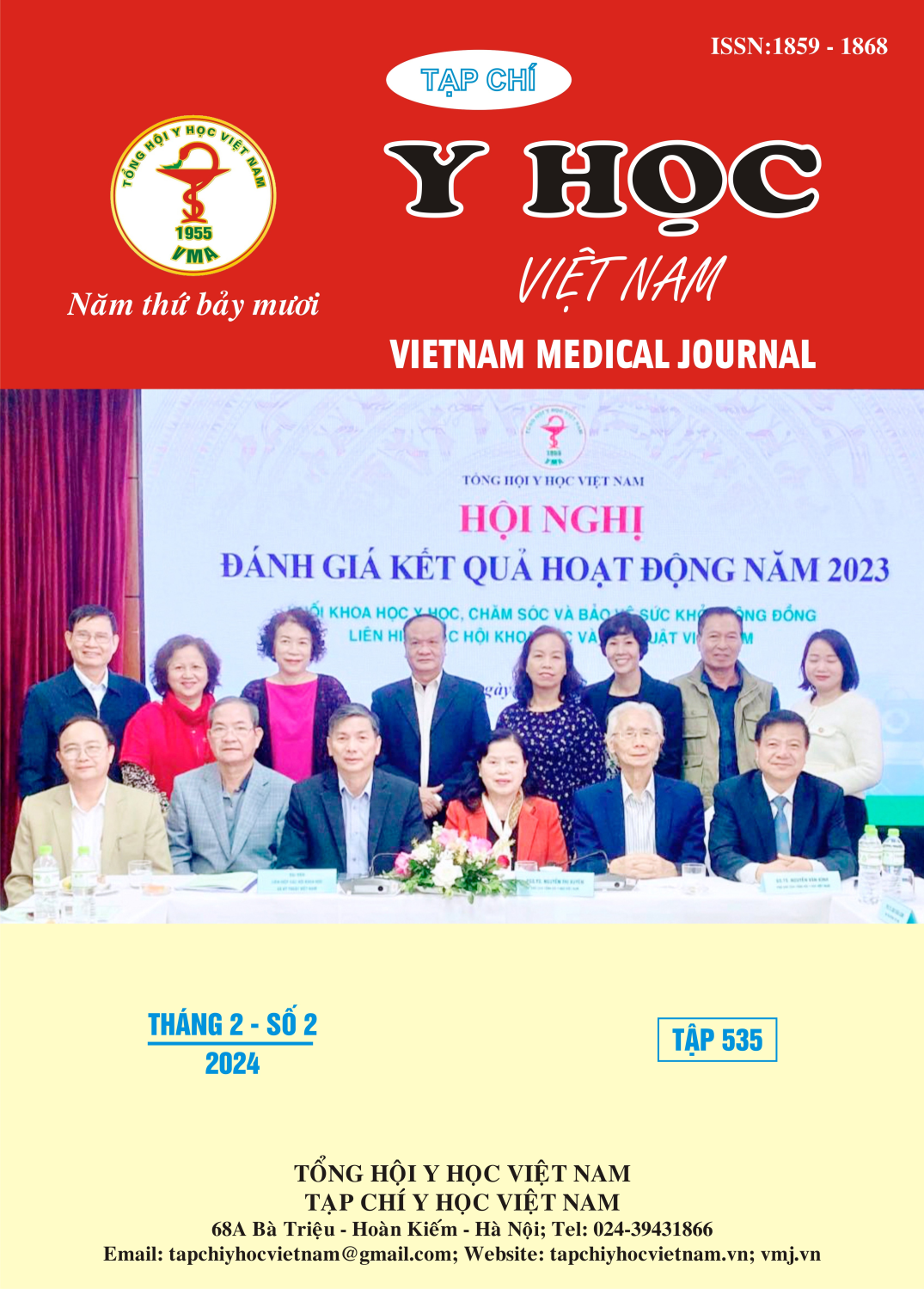MANAGEMENT OF VENTRICULAR ARRHYTHMIAS IN ACUTE MYOCARDIAL INFARCTION PATIENTS UNDERGOING PRIMARY PERCUTANEOUS CORONARY INTERVENTION
Main Article Content
Abstract
Background: The rate of ventricular arrhythmia in ST-segment elevation myocardial infarction has been significantly reduced by primary percutaneous coronary intervention. However, these events still cause a large short- and long-term disease burden in these patients. Objective: Results of ventricular arrhythmia management in patients with ST-segment elevation myocardial infarction underwent percutaneous coronary intervention. Methods: A observational study of 150 patients diagnosed with ST-segment elevation myocardial infarction who underwent percutaneous coronary intervention and had ventricular arrhythmias during their hospital stay at the hospital Vietnam Heart Institute and Vinh Phuc Provincial General Hospital from September 2022 to July 2023. Results: Rates of clinically significant ventricular arrhythmias at the time of admission was 2.66%; in intervention accounts for 5.33%; after intervention, rate was 2.66% and before discharge, there were no cases of ventricular fibrillation, ventricular tachycardia accounted for 2%. In multivariable regression analysis, TIMI ≤ 2 had the greatest influence on the development of serious, dangerous ventricular arrhythmia with OR = 26.22 and P = 0.001. LVEF contributed to the worsening of ventricular arrhythmias with OR = 6.02 and P = 0.029. Male was a protective factor with OR = 0.12 and P = 0.018. Conclusion: Men can be a protective factor, while heart failure EF ≤ 40% and slow flow phenomenon after intervention have great impact on the formation of serious and dangerous ventricular arrhythmia.
Article Details
Keywords
Dangerous ventricular arrhythmia, ST-elevation myocardial infarction.
References
2. Piccini, J.P., et al., Antiarrhythmic drug therapy for sustained ventricular arrhythmias complicating acute myocardial infarction. Crit Care Med, 2011. 39(1): p. 78-83.
3. Bùi Thị Mỹ Lệ và cộng sự, Đánh giá đặc điểm rối loạn nhịp tim ở bệnh nhân nhồi máu cơ tim cấp có ST chênh lên sau can thiệp động mạch vành (2016). Luận văn thạc sĩ y học.
4. Wongthida, T., et al., Development of a Clinical Risk Score for Prediction of Life-Threatening Arrhythmia Events in Patients with ST Elevated Acute Coronary Syndrome after Primary Percutaneous Coronary Intervention. Int J Environ Res Public Health, 2022. 19(4).
5. Ohlow, M.A., et al., Incidence and predictors of ventricular arrhythmias after ST-segment elevation myocardial infarction. Am J Emerg Med, 2012. 30(4): p. 580-6.
6. Nepper-Christensen, L., et al., Importance of elevated heart rate in the very early phase of ST-segment elevation myocardial infarction: Results from the DANAMI-3 trial. Eur Heart J Acute Cardiovasc Care, 2019. 8(4): p. 318-328.
7. Pantea-Rosan, L.R., et al., No-Reflow after PPCI-A Predictor of Short-Term Outcomes in STEMI Patients. J Clin Med, 2020. 9(9).
8. McMurray, J., et al., Antiarrhythmic effect of carvedilol after acute myocardial infarction: results of the Carvedilol Post-Infarct Survival Control in Left Ventricular Dysfunction (CAPRICORN) trial. J Am Coll Cardiol, 2005. 45(4): p. 525-30.
9. Stuart J Connolly et al., Comparison of beta-blockers, amiodarone plus beta-blockers, or sotalol for prevention of shocks from implantable cardioverter defibrillators: the OPTIC Study: a randomized trial. JAMA. 2006 Jan 11;295(2):165-71.


